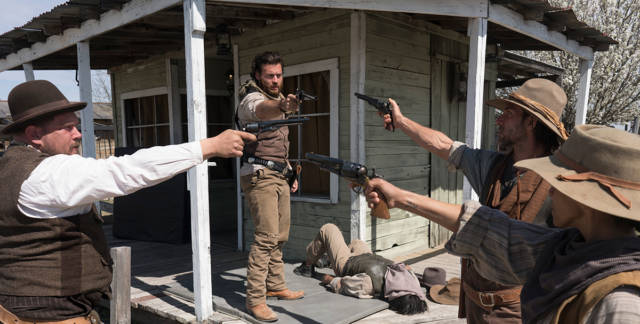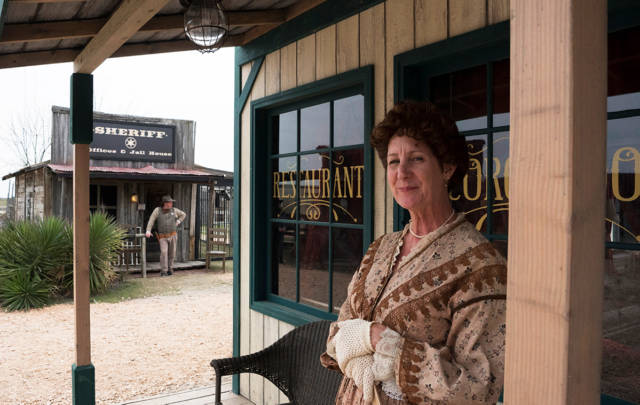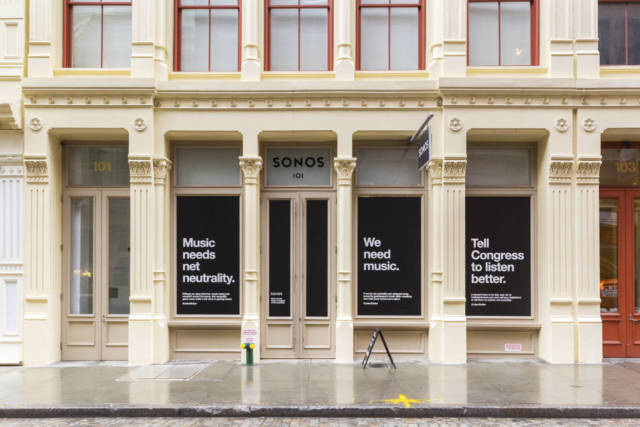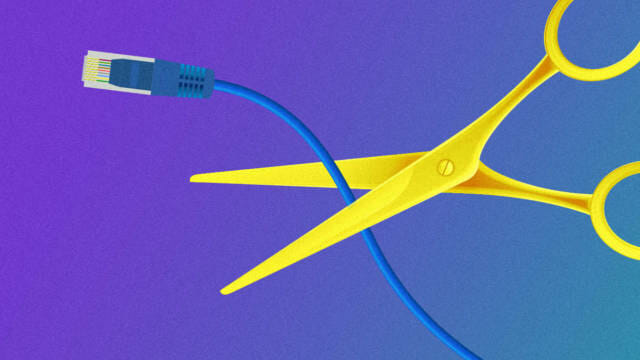For those of you headed to SXSW, you should know that it’s basically one big party. Here’s your 2018 guide to help you navigate this annual get together of creatives and (productive) party animals.
This list is presented in chronological order and will be updated regularly. Did we miss anything? Let us know!
Note that SXSW badges are required unless otherwise noted. While not all events specifically say they are restricted to ages 21-and-over, be prepared to show ID if alcohol is served—and please celebrate responsibly. Food and drink may not be free, regardless of entry price.
FOX Sports House
Sports fans descend on the Hangar Lounge to kick off the 2018 FIFA World Cup. Expert panels, live show programming and special guests. Features food, drinks and entertainment.
When: Friday, March 9 from 11 a.m. to 8 p.m.
Sports Kick-off Party runs from 7 to 10 p.m.
Where: Hangar Lounge, 318 Colorado St. Austin, TX 78701
Requirements: Platinum, Interactive, Music or Film Badge
Price: Free
Comcast Social Media Lounge Hosted By TechSet
Back for its 11th year, the SXSW Social Media Lounge is a place to chill out with friends or make new ones. Technology, food, beverages and networking.
When: Friday, March 9 from 11:00 a.m. to 6:00 p.m.
Saturday, March 10 from 9:30 a.m to 6:00 p.m.
Sunday, March 11 from 11:00 a.m. to 6:00 p.m.
Monday, March 12 from 9:30 a.m. to 6:00 p.m.
Tuesday, March 13 from 9:30 a.m. to 6:00 p.m.
Where: Austin Convention Center, Room 19 A/B, 500 E. Caesar Chavez St., Austin, TX 78701
Requirements: Platinum, Interactive, Music or Film Badge
Price: Free
SXSW Taco Meetup
Tacos aren’t just for Tuesdays anymore. The 7th annual Taco Meetup at SXSW is hosted by Magento Commerce. Ticket holders can take a culinary tour of five taco restaurants from the Austin area. Vegetarian options will be available.
When: Friday, March 9 from 12 to 2 p.m.
Where: Brush Square Park, 409 E. 5th St., Austin, TX 78701
Requirements: Platinum, Interactive, Music or Film Badge
Price: Tickets can be purchased with SXSW badges
Nerdist House
Star Wars, Guardians of the Galaxy and Batman Stern pinball tournaments, live music, custom alter ego silhouettes made on site and a zombie marching band await you away from the crowds.
When: Friday, March 9 from 12:00 p.m. to Saturday, March 10 at 12:00 a.m.
Saturday, March 10 from 12:00 p.m. to Sunday, March 11 at 12:00 a.m.
Sunday, March 11 from 10 a.m. to 3 p.m.
Where: Banger’s Sausage House and Beer Garden, 79 Rainey St, Austin, TX 78701
Requirements: No badge required
Price: Free
Mashable House And MashBash: Time Warp
Celebrating cultural moments and tech innovations of the past, present and future with drinks, music, dancing and “maybe a few surprises.”
When: Friday, March 9 from 12 to 5 p.m.
Saturday, March 10 from 12 to 5 p.m.
Sunday, March 11 from 11 a.m. to 3 p.m.
Where: The Main, 610 E. 6th Ave. Austin, TX 78701
Requirements: Platinum, Interactive, Music or Film Badge
Price: Free
Lesbutante And The Boss LBQTIA+ SXSW Bash
Party and network with a diverse host of entrepreneurs and creatives. Includes panels and a meet and greet. Those who RSVP get a drawstring backpack swag bag, a commemorative hat, guaranteed entry and a VIP section with available booth seating.
When: Saturday, March 10 from 9 p.m. to Monday, March 11 at 3 a.m.
Where: Sellers Underground, 213 W. 4th St., Austin, TX 78701
Requirements: No SXSW badge required
Price: Free for general admission, VIP access available from $20-$100
Film Industry Happy Hour Hosted By Rotten Tomatoes
Networking with professionals from movies and TV.
When: Friday, March 9 from 5 to 7 p.m.
Where: Intercontinental, Stephen P Austin Ballroom A, 701 Congress Ave., Austin, TX 78701
Requirements: 21+, Film and Platinum badges only
Price: Free
Interactive Opening Party
SXSW official kick-off sponsored by Accenture Interactive. This annual shindig features live music, an open bar alongside Accenture’s ad tech and client demos.
When: Friday, March 9 from 8 to 11 p.m.
Where: Micheladas, 333 E. 2nd St., Austin, TX 78701
Requirements: Platinum, Interactive, Music or Film Badge
Price: Free
Alita: Battle Angel Opening Party
A unique chance to visit the Iron City movie set for 20th Century Fox’s Alita: Battle Angel ahead of the film’s debut. A shuttle will take guests to Robert Rodriguez’s Troublemaker Studios, where they will be joined by members of the film’s cast and crew for a celebratory get-together.
When: Friday, March 9 from 9:30 p.m. to Saturday, March 10 at 12:30 a.m.
Where: Shuttle picks up at the 5th Street side entrance of the Hilton Hotel in Downtown Austin, 500 E. 4th St., Austin, TX 78701
Requirements: Film and Platinum badges only
Price: Free
SingularDTV Post-Panel Cocktail: Tokenized Economics And Mixed Drinks
Discuss blockchain, content funding and production over a drink with SingularDTV’s Zach LeBeau, EDM producer Gramatik, XYZ Films’ Nate Bolotin and others.
When: Saturday, March 10 from 4:30 to 5:40 p.m.
Where: Austin Convention Center, Room 12AB, 500 E. Cesar Chavez, Austin, TX, 78701
Requirements: Platinum, Interactive, Music or Film badge
Price: Free
Film Industry Happy Hour Hosted By Stream Space
One of many SXSW parties that are perfect for film and TV show enthusiasts.
When: Saturday, March 10 from 5 to 7 p.m.
Where: Intercontinental, Stephen P Austin Ballroom A, 701 Congress Ave., Austin, TX 78701
Requirements: 21+, Film and Platinum badges only
Price: Free
[a]list @ SXSW
Come hang out with us! Want to talk marketing? AListDaily has you covered. Stop by and connect with fellow marketing and media leaders over music, food and drinks.
When: Saturday, March 10 from 6 to 9 p.m.
Where: Lambert’s Downtown Barbeque, 401 W. 2nd St., Austin, TX 78701
Requirements: If you haven’t RSVP’d, please email us at sxsw@alistdaily.com!
Price: Free
Interactive Mix At Six Party
Presented by Cogeco Peer 1, this mixer provides snacks, networking and presumably drinks, since the venue is 21+.
When: Saturday, March 10 from 6 to 8 p.m.
Where: Swan Dive, 615 Red River St., Austin, TX 78701
Requirements: 21+, Interactive and Platinum badges only
Price: Free
SXSW Social Impact Opening Party Presented By Handshake
Enjoy a lake view cocktail party and rub elbows with philanthropists, storytellers and entertainers.
When: Saturday, March 10 from 7 to 10 p.m.
Where: Waller Creek Boathouse, 71 Trinity St., Austin, TX 78701
Requirements: Platinum, Interactive, Music or Film badge
Price: Free
SXSW Film Festival 25th Edition Party Hosted By Ready Player One and Vive VR
An interactive experience based on the upcoming Warner Bros. film. Guests are invited to explore OASIS, the VR world from Ready Player One using Vive VR headsets and learn more about the film’s dystopian setting. The party features live DJ performances by Them Jeans.
When: Saturday, March 10 from 10 p.m. to Sunday, March 11 at 3 a.m.
Where: Brazos Hall, 204 E. 4th St., Austin, TX 78701
Requirements: 21+, Film and Platinum badges only
Price: Free
Crunch By Crunchfest
TechCrunch throws SXSW parties each year and tickets go fast. Meet writers and watch live performances by Autograf, Mobley, MIEARS and Glassio.
When: Sunday, March 11 from 12 to 4 p.m.
Where: The Sidewinder, 15 Red River St., Austin, TX 78701
Requirements: Ticket required. Although RSVPs have closed, the site suggests contacting a TechCrunch writer for access.
Price: Free
Cities Summit Opening Party Presented By Bosch
The Cities Summit kicks off with networking and drinks.
When: Sunday, March 11 from 6 to 8:30 p.m.
Where: Palm Door on Sixth, 508 E. 6th St., Austin, TX 78701
Requirements: 21+, Platinum, Interactive, Music or Film badge
Price: Free
Viceland Party Lot
If your dream of SXSW parties involves farm animals, look no further. This three-day party bus includes drinks, music, swag, snacks and oh, yes—baby goats.
When: Sunday, March 11, Monday, March 12 and Tuesday, March 13 from 10 a.m. to 6 p.m.
Where: 98 Red River Lot., 98 Red River St., Austin, TX 78701
Requirements: Platinum, Interactive, Music or Film badge
Price: Free
John Hardy Celebrates International Women’s Day
A celebration of female strength as embodied by the Naga dragon of Balinese legend.
When: Sunday, March 11 from 6 to 8 p.m.
Where: Four Seasons Terrace, 98 San Jacinto Blvd., Austin, TX 78701
Requirements: 21+, Platinum, Interactive, Music or Film badge
Price: Free
Red Bull Media Presents The Dawn Wall After Party
Celebrating the North American premiere of The Dawn Wall, a film by Red Bull Media and Sender Films. Join the cast and crew for an interactive installation, artwork, behind the scenes and of course, a few drinks.
When: Sunday, March 11 from 6 to 10 p.m
Where: Parlor & Yard, 601 W. 6th, Austin, TX 78701
Requirements: 21+, Platinum and Interactive badges only
Price: Free
IFC Midnight Presents A SXSW Party
My dudes. If you ever wanted to see Frodo playing a DJ set, you don’t want to miss this. Elijah Wood will DJ along with Zach Cowie (Wooden Wisdom) and Death Waltz & Mondo Vinyl.
When: Sunday, March 11 from 8 to 11:30 p.m.
Where: Charles Johnson House – American Legion, 404 Atlanta St., Austin, TX 78703
Requirements: 21+, Film and Platinum badges only
Price: Free
Dance Party With Gramatik And Friends
Hosted by SingularDTV, electronic music producer Gramatik wants you to know about his GRMTK crypto tokens. He’s celebrating his anticipated wealth with a live performance.
When: Sunday, March 11 from 9 p.m to Monday, March 12 at 2 a.m.
Where: Clearport, 516 E. 6th St., Austin, TX 78701
Requirements: 18+, Platinum, Interactive, Music or Film badge
Price: Free
Film Industry Happy Hour Hosted By Killer Tracks
Another chance to hang out with fellow film and TV enthusiasts.
When: Sunday, March 11 from 9 p.m to Monday, March 12 at 2 a.m.
Where: Intercontinental, Stephen P Austin Ballroom A, 701 Congress Ave., Austin, TX 78701
Requirements: 21+, Film and Platinum badges only
Price: Free
HappyHourLab With CityLab
A get together for those passionate about the future of their cities. Features a conversation with musical artist Tunde Olaniran about his hometown of Flint, Michigan.
When: Monday, March 12 from 6 to 8 p.m.
Where: Four Seasons Terrace, 98 San Jacinto Blvd., Austin, TX 78701
Requirements: 21+, Platinum, Interactive, Music or Film badge
Price: Free
Strangeworks SXSW Launch Party
This brand new stealth quantum computing software startup is throwing a party. Come say hello.
When: Tuesday, March 13 from 8 p.m. to Wednesday, March 14 at 12 a.m.
Where: Lustre Pearl, 94 Rainey St., Austin, TX 78701
Requirements: 21+, Platinum, Interactive, Music or Film badge
Price: Free
Film Intermission Party Presented By Netflix
Right after the awards ceremony, shuttles will be available to take film buffs to an after party.
When: Tuesday, March 13 from 10 p.m. to Wednesday, March 14 at 1 a.m.
Where: Zach Theatre, 202 S. Lamar, Austin, TX 78704
Requirements: Film and Platinum badges only
Price: Free
Music Opening Party Presented By Greater Fort Lauderdale’s Underground
Kick off the SXSW Music Festival with drinks and live performances.
When: Tuesday, March 13 from 6 to 9 p.m., Riptide Music Festival runs from 9 p.m. to Wednesday, March 14 at 2 a.m.
Where: TBA
Requirements: Platinum or Music badge
Price: Free
Party At The Fort Worth Now House
This all-ages party features live music with free beer and whiskey, while supplies last. Performances by Quaker City Night Hawks, Grady Spencer & the Work, Abraham Alexander, Summer Dean and others.
When: Wednesday, March 14 from 1 to 6 p.m.
Where: Fair Market, 1100 E. 5th St., Austin, TX 78702
Requirements: Platinum, Interactive, Music or Film badge
Price: Free
SXSW Hackathon After Party
A 24-hour hackathon ends not with sleep, but with drinks and music following the awards ceremony.
When: Wednesday, March 14 from 5 to 7 p.m.
Where: TBA
Requirements: Platinum, Interactive, Music or Film badge
Price: Free
SXSW Gaming Opening Party
Join The Attack‘s Alex Corea and enjoy a host nerdcore musical artists as they kick off the SXSW gaming festival. Live performances by Mega Ran, SAMMUS, Rockit Gaming, NerdOut! and Super Soul Bros.
When: Thursday, March 15 from 8 to 11 p.m.
Where: Hilton Austin Downtown, Grand Ballroom, 500 E. 4th St., Austin, TX 78701
Requirements: 21+, Platinum, Interactive, Music, or Film badge
Price: Free
Sounds From Spain Paella Day Party
Sip on Sangria, munch on paella and watch live performances from Spanish artists including Neuman, Christina Rosenvinge, The Zephyr Bones, Los Wilds and Joe Crepusculo.
When: Friday, March 16 from 1 to 5 p.m.
Where: Brush Square Park, 409 E. 5th St., Austin, TX 78701
Requirements: 21+, Platinum, Interactive, Music, or Film badge, artist wristband
Price: Free
SXSW Gaming Closing Party
Alas, the Gaming Festival must come to an end, but not the revelry.
When: Saturday, March 17 from 11 p.m. to Sunday, March 18 at 1 a.m.
Where: The Belmont, 305 W. 6th St., Austin, TX 78701
Requirements: 21+, Platinum, Interactive, Music or Film badge
Price: Free
 Steven Cardwell, HBO’s director of program marketing and strategy, said SXSW served as a natural extension for the show’s marketing plan because the network had already served consumers with theatrical experiences and appetizers at San Diego Comic Con and New York Comic Con last year. There was even a hidden URL in the Westworld Super Bowl commercial that kick-started registration for the SXSW experience.
Steven Cardwell, HBO’s director of program marketing and strategy, said SXSW served as a natural extension for the show’s marketing plan because the network had already served consumers with theatrical experiences and appetizers at San Diego Comic Con and New York Comic Con last year. There was even a hidden URL in the Westworld Super Bowl commercial that kick-started registration for the SXSW experience. “There is a lot of noise at SXSW, but we know that demand is there for the show,” Cardwell said. “We sold out of tickets in two minutes. We’re in our tune-in window right now, so it’s great to see that.”
“There is a lot of noise at SXSW, but we know that demand is there for the show,” Cardwell said. “We sold out of tickets in two minutes. We’re in our tune-in window right now, so it’s great to see that.”

